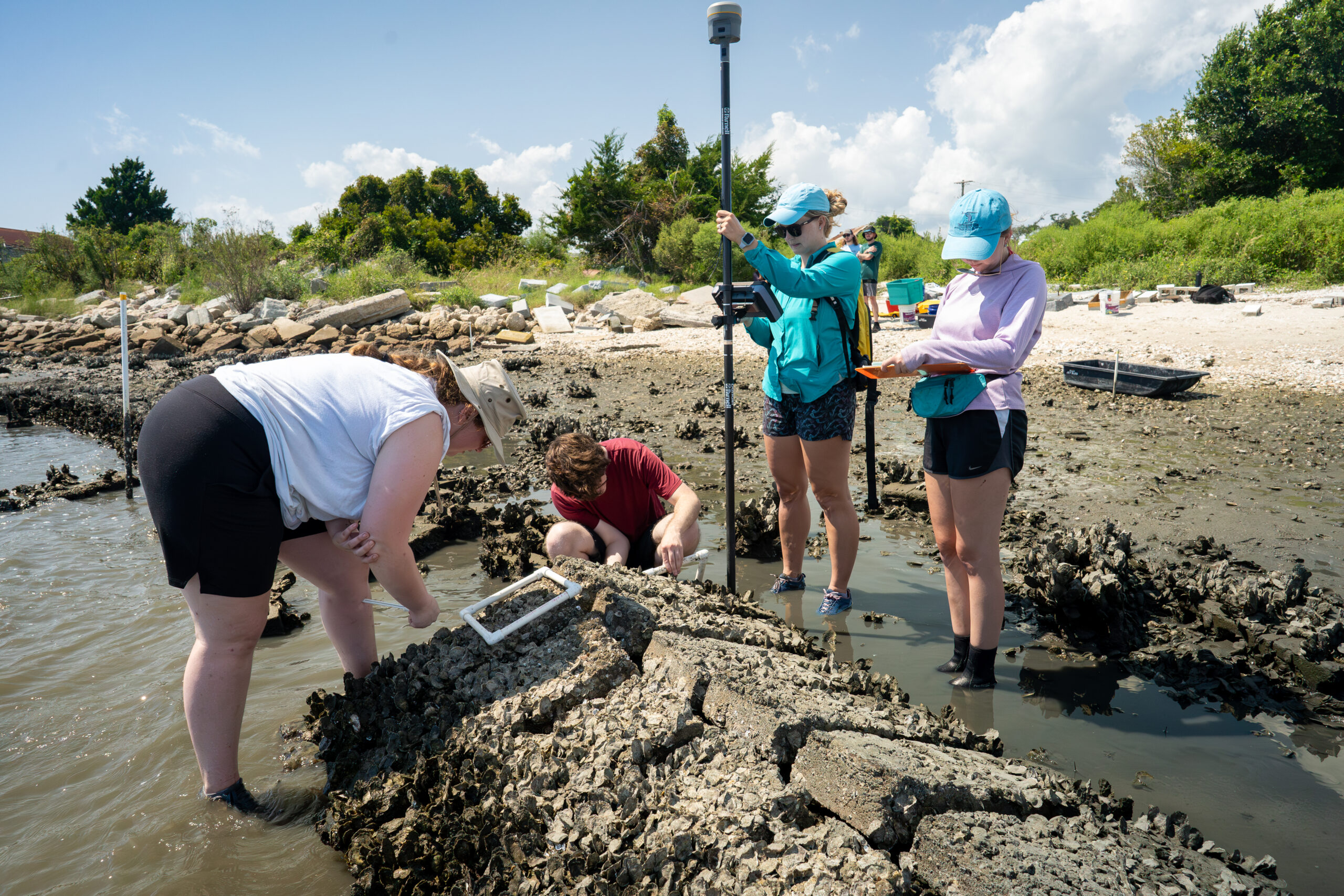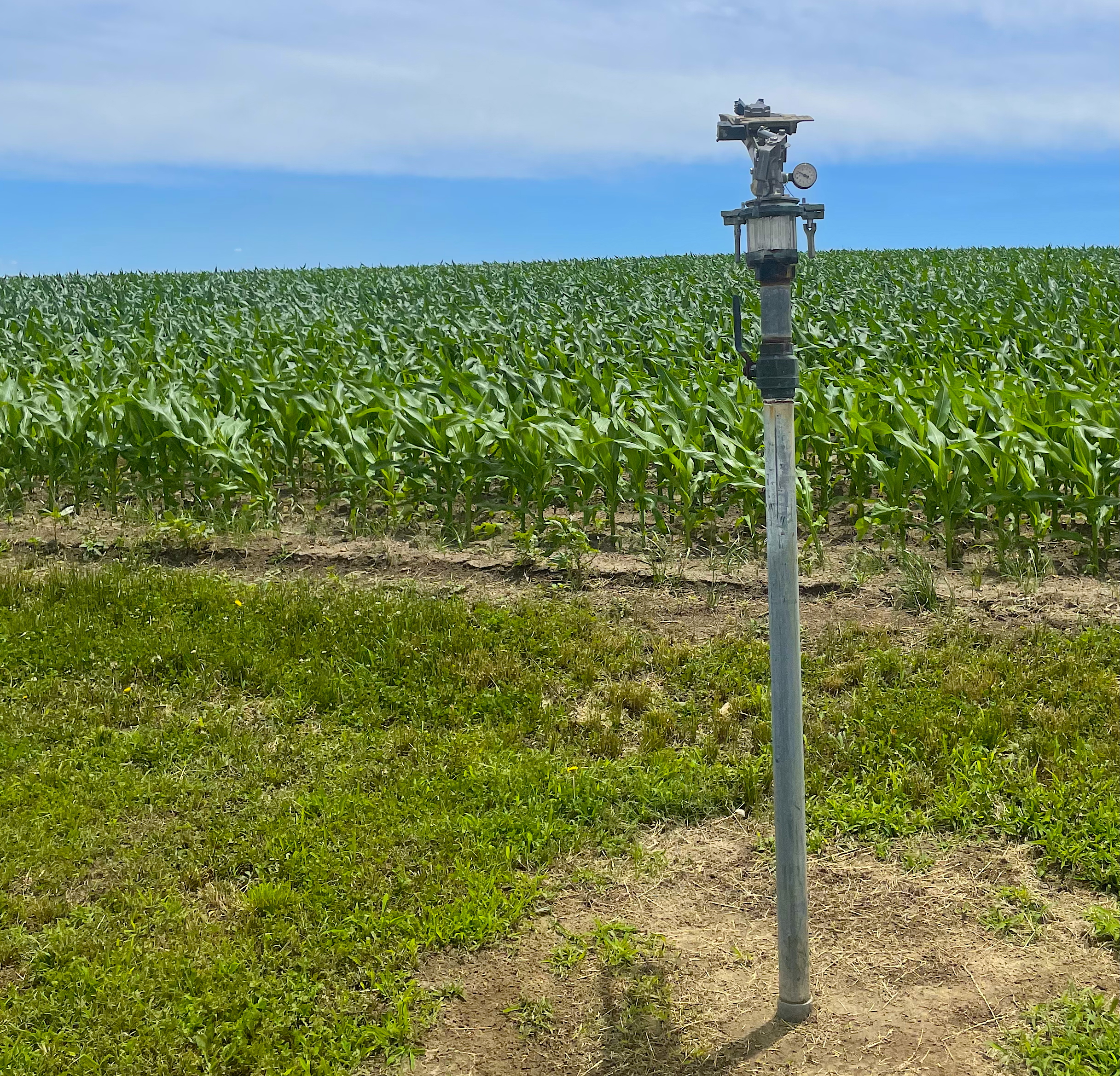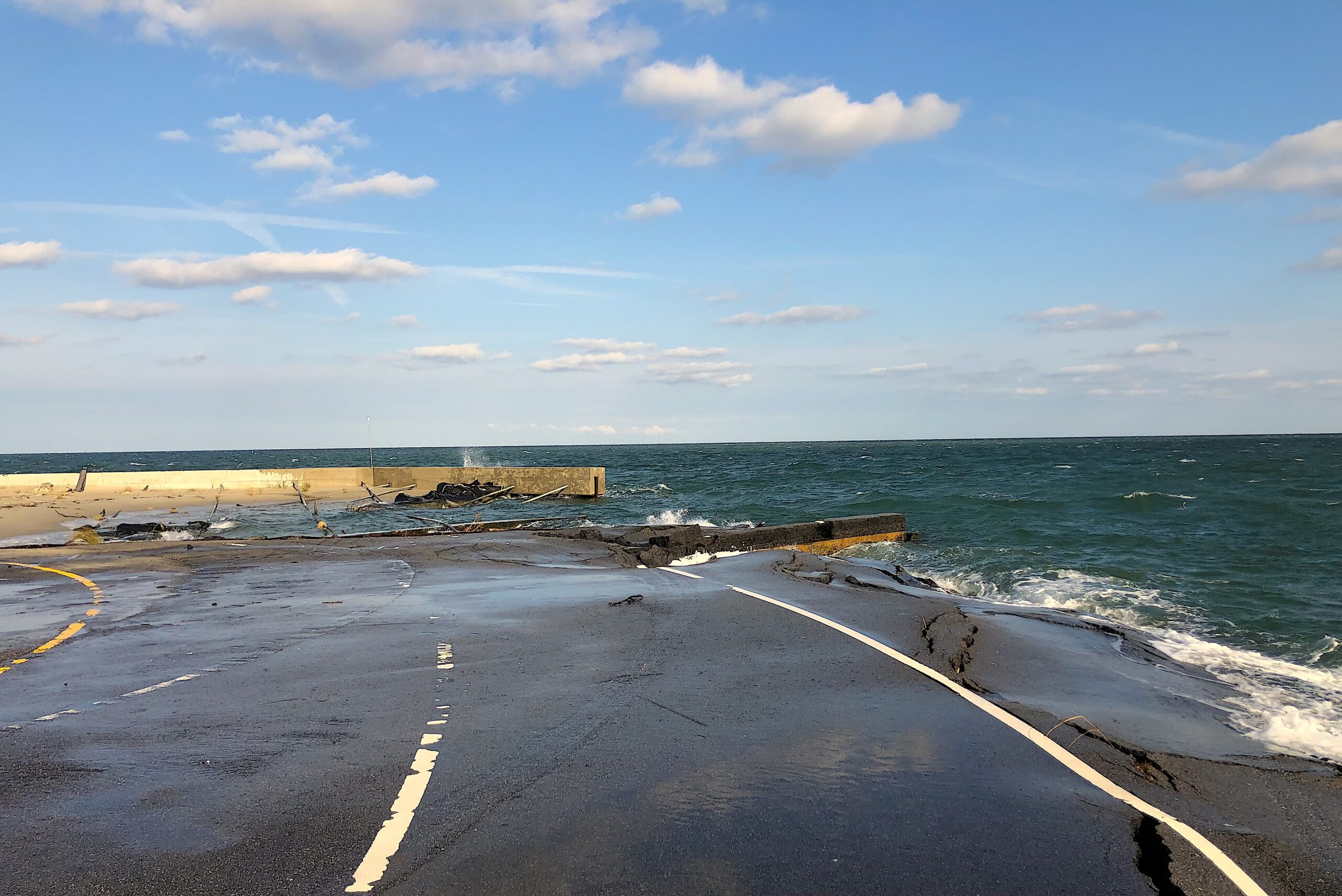Shifting Shores
Living shorelines along North Carolina’s waters offer the promise of more resilient coastal habitats and communities.
Coastal hazards, such as hurricanes and sea level rise, continue to increase with climate change — and shoreline modifications, dredging, and boating wakes can exacerbate erosion and property damage. The growing number of coastal residents and the expansion of infrastructure in North Carolina bring additional challenges to the protection of our coastal habitats and communities.
Traditional approaches often are not as effective as greener approaches. However, coastal communities also face many uncertainties regarding natural and nature-based strategies for adaptation — including questions about engineering effectiveness, as well as social and ecological benefits and trade-offs.
Living shorelines mimic natural shorelines and support resilient communities and ecosystems by slowing down and absorbing wave energy, while also providing habitat, improving water quality, stabilizing shoreline sediment, storing carbon, and promoting recreation. As opposed to concrete seawalls or rigid structures that hinder plant and animal growth, living shorelines evolve and expand over time.
North Carolina Sea Grant is collaborating with Carteret Community College and researchers from East Carolina University — along with the North Carolina Coastal Federation, N.C. Division of Coastal Management, and the N.C. Coastal Reserve and National Estuarine Research Reserve — on a four-year project to study the most effective strategies to increase the use of natural and nature-based techniques. This year, Carteret Community College is launching the first courses in the “Living Shoreline Academy,” a new certification program for coastal property owners, engineers, and marine contractors.
The Living Shoreline Academy will provide workforce training, outreach, and education opportunities. Students will learn about the theory, construction, and permitting processes of living shorelines, as well as how to produce marsh plants.
This year’s course offerings feature the three-hour “Introduction to Living Shorelines” and a four-session weekly “Structures and Design” course in April. Additionally, during the Fall semester, students can enroll in a course specifically designed to support vegetative planting solutions for living shorelines.

MORE
Dan DiNicola is the science and digital media editor for Coastwatch, and Sarah Spiegler is the coastal resilience specialist for North Carolina Sea Grant. Both are award-winning science communicators.



